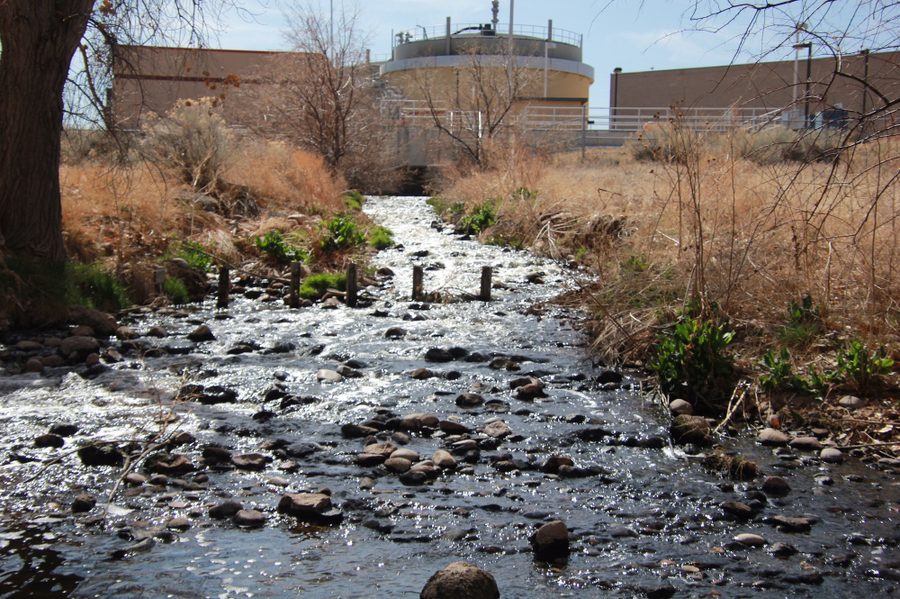Caught in the Drain: How a Plan to Reuse Wastewater Could Strangle the Santa Fe River
As climate change tightens its grip on the arid West, water managers are focusing on wastewater as a source of “new” water for cities.
Denise Fort Writers on the Range

Editor’s Note: This column was provided by Writers on the Range, an independent nonprofit dedicated to spurring lively conversation about the West.
Santa Fe, New Mexico, once was sustained by the waters of the Santa Fe River, which begins in the high country of the Sangre de Cristo Mountains, flows through the city and then onward to the Rio Grande.
But when Western cities grow, they look everywhere for more water, with little regard for the rivers they drain. As the city’s population grew, Santa Fe turned to its groundwater. Later, New Mexico reached across the desert to take water from the Colorado River and deliver it to Santa Fe, Albuquerque and other beneficiaries on the Rio Grande.
And yet the Santa Fe River downstream was not reduced to a dry and dusty arroyo. In fact, the riverbed is relatively verdant, supporting cottonwoods, willows and sustaining some irrigation in communities downstream. That moisture helps make Santa Fe a beautiful place in the desert.
That’s because the water that Santa Fe residents use to flush their toilets or pour down the drain ultimately makes its way to the wastewater treatment plant, which returns the treated water to the Santa Fe River. That could soon change.
The city’s water bureaucrats have fastened on the idea of capturing some of that treated effluent, either to get additional “return flow” credits by returning it to the Rio Grande, or by moving to direct potable reuse, a process derided in California as “toilet to tap.”
But both of these proposals will also take water out of the Santa Fe River, affecting downstream irrigators, wildlife and even the cultural identity of the region.
As climate change tightens its grip on the arid West, water managers are focusing on wastewater as a source of “new” water for cities. It’s hard to blame them: Municipalities don’t need new water rights in order to reuse treated effluent.
Communities dump their treated sewage into rivers, and downstream users draw that water, treat it, and send it to residents’ homes. Orange County and Irvine Ranch in California are pioneers in recycling wastewater. The Bureau of Reclamation now administers a fund for water-reuse projects, and the Environmental Protection Agency has made it a national priority.
There’s another strategy that Western cities like Santa Fe are exploiting to make use of their wastewater. Instead of sending all of the treated wastewater back into the potable water supply, Santa Fe plans to send some of its wastewater to the Rio Grande via a $20 million pipeline. This would give the city the right to pump additional water from the Rio Grande. Regardless of how the city proceeds, the Santa Fe River will end up losing some of the water that provides for its existence.
Never forget that Western water law was set up to serve users, not rivers. And under Western states’ laws, cities own their treated sewage, meaning they can use it or sell it downstream as they wish. In fact, wastewater is such a reliable supply that it gets top value at Western water auctions.
Santa Fe’s webpages overflow with the community’s commitment to sustainability. But these values were disregarded in the city’s focus on squeezing more water out of the system for a growing populace.
Wastewater has other values and uses, though. How do we draw attention to them? A report by the National Wildlife Federation, the Pacific Institute and the Meadows Center for Water and the Environment warns that reusing water can inadvertently “starve natural systems of needed flows and potentially reduce water available to communities downstream.”
Instead, the groups urge planners to “incorporate actions to protect (and where possible, enhance) river flows downstream for the benefit of people and the environment.”
By now, years of battles over Western water should have taught water managers that while people value reliable water supplies, they also value living rivers, small farms, historic communities and recreation. The report urges water managers to consult with the public before making decisions. It also lays out a blueprint for incorporating the value of living rivers, as well as addressing water supply.
Wringing more use from water, even wastewater, is a powerful tool in addressing water scarcity. But just like the dams, pipelines and other tools of the Cadillac Desert era, wastewater ought to be approached with respect for all of its values. The proponents of water reuse need to acknowledge this.
Denise Fort is a contributor to Writers on the Range, writersontherange.org, an independent nonprofit dedicated to lively conversation about the West. She is professor emerita at the University of New Mexico School of Law and has co-authored three reports for the National Academies on water reuse.




